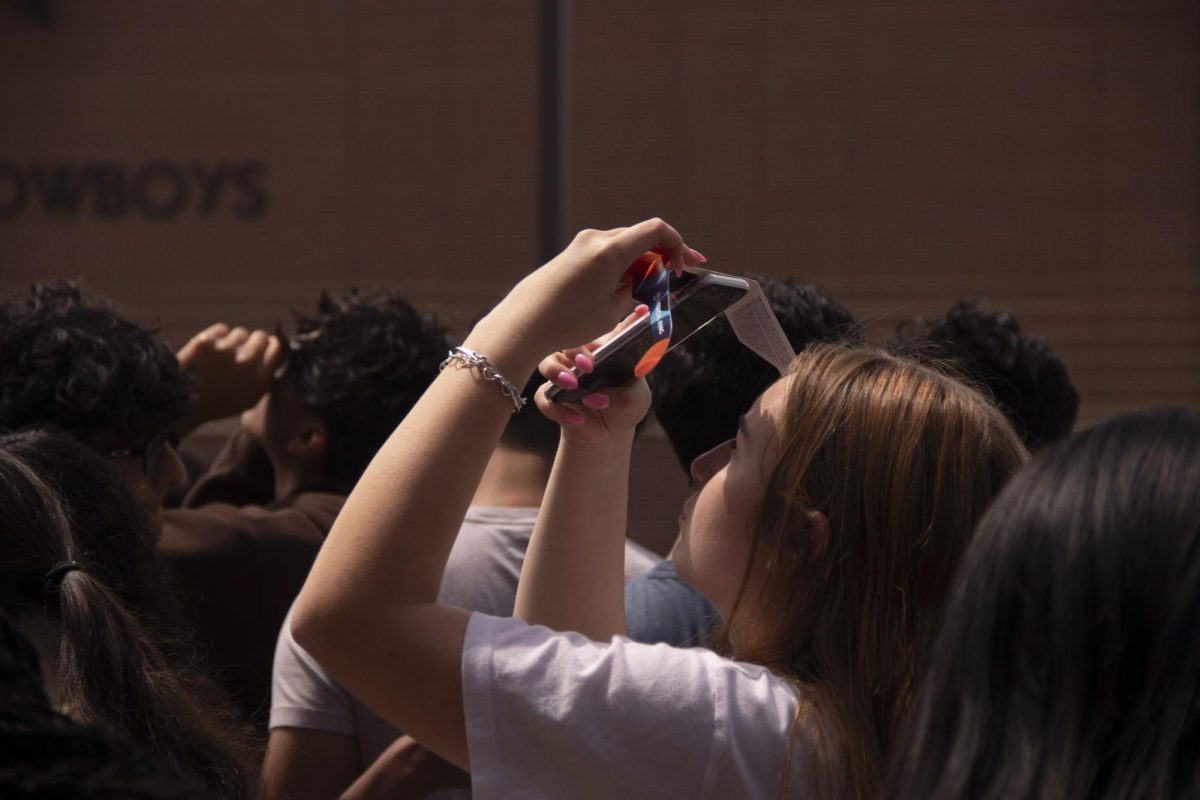By Ellen Cameron
Staff Writer
The horrible updos, the ridiculous shoulder pads, the garish colors: fashion disasters of the ‘80s. It’s hard to believe that such looks used to be considered cool, and even beautiful, but they were… for some reason.
Maybe everyone was colorblind?
Although then it could be argued that we will later regret our current fashion choices as fits of cultural insanity. Regardless, it’s obvious that the fashion has evolved over the years, but fashion is far from isolated: fashion stems from interesting cultural phenomenon that can be directly linked.
Skin tone
Back in the day (as in, really back—centuries back), beginning in predominantly England (who we share the most culture with), it was considered attractive to be exceptionally pale, because the only people who were pale were the people who did not need to work in the fields under the sun like peasants, which meant the rich aristocracy. As a symbol of wealth, pale skin was concerned a sign of beauty.
Then, the Industrial Revolution brought peasants into the dark of factories, which leveled the field a bit. As society progressed and the aristocracy dwindled and the middle class developed, the playing field leveled out more.
Fast forward to the 1920s, when Coco Chanel accidentally got a sun burn when she was vacationing in the French Riviera; her status as a fashion icon was the final mark in making sun tanning popular.
Now, sun tanning is still in many ways a sign of wealth, as only the upper middle class can really afford to spend all day tanning or pay for sunless tanners and tanning beds. The change in socioeconomics had an undeniable effect on fashion.
Body weight
Like skin tone, body weight was also an issue of beauty that followed economics. Being overweight used to be a sign of wealth, because it meant you could afford to eat and eat well, unlike peasants who lived off paltry sums of vegetables and bread.
Then the lower classes started filling out in Europe following cultural reform, and in America, plentiful land for farming made starvation less of an issue. Gradually, this sharp disparity was mitigated by the social climate.
Until the microwave. The microwave made it easy and relatively cheap to consume tasty and higher calorie foods (to the point that you really have to hunt to find anything that is not a pre-prepared meal in Walmart’s frozen food section, I discovered when grocery shopping for my mother), and then came the influx of new foods of all kinds: potato chips, fried anything, massed quantities of junk food—everything that helps make our nation one of the fattest in the world. Now, being overweight is no longer considered beautiful, just pedestrian.
Being “skinny” is also a sign of socio-economic status, as it means you can afford Jenny Craig, gym memberships, or risky but ever-growing weight-removing surgery. It almost begs the question if fashion is a sign of the times that then reinforces the times and encourages this kind of fixation to continue.
Higher hemlines- the economy effect
According to the Seattle Post-Intelligencer, hemlines are a prediction of the economy. For example, the 1920s saw the shorter hemlines of the flapper dresses, and then the Great Depression saw those hemlines drop as women could no longer afford the silk stockings that were a fashion must.
It makes sense in another way as well, for clothing is a sign of the people’s confidence in the economy, and being afraid will affect how people shop.
While Barron’s Finance & Investment Handbook does take note of the correlation between hemlines and the economy, it says, “”Despite its sometimes uncanny way of being prophetic, the hemline theory has remained more in the area of wishful thinking than serious market analysis.”
Barron’s can say what it likes, but even recent times have proven the theory true: last summer, amid the rumblings of the upset economy, the maxi-dress came back into fashion.
Evolution of blue jeans- Jordache
Blue jeans: the most versatile piece of clothing in a woman’s closet and reliable, like an old friend. And yet, it wasn’t always that way; in fact, blue jeans used to be the equivalent of wearing a burlap sack.
Blue jeans began their life as dungarees and became wildly popular first among miners in the California Gold Rush in the 1850s, because miners needed pants, and theirs were falling apart under the intense labor of mining. The rivets in blue jeans (patented by Levi Strauss but made by Jacob Davis) made blue jeans sturdier, while the use of denim instead of wool made them cheaper.
Fast forward a few years, to when blue jeans made it out of California and became part of the working man’s uniform. Then comes Jordache.
Jordache is accredited with being one of the most important turning points in the history of blue jeans, because Jordache made some of the first designer blue jeans and sold them in department stores. And yet, blue jeans were still stigmatized as “working clothes”. Until Jordache’s use of advertisements created a demand for these nicer blue jeans, according to ehow.com
Truly, fashion is a reflection not of culture, but of economics, and socio-economics.
Video by
 " />
" />














